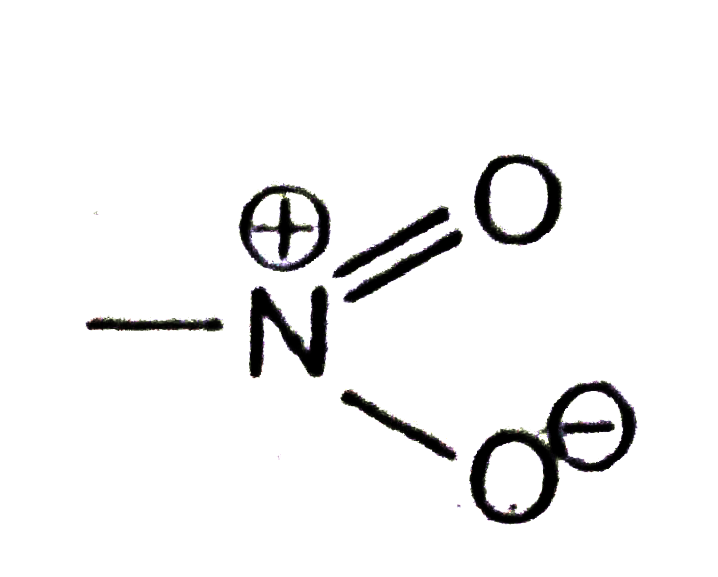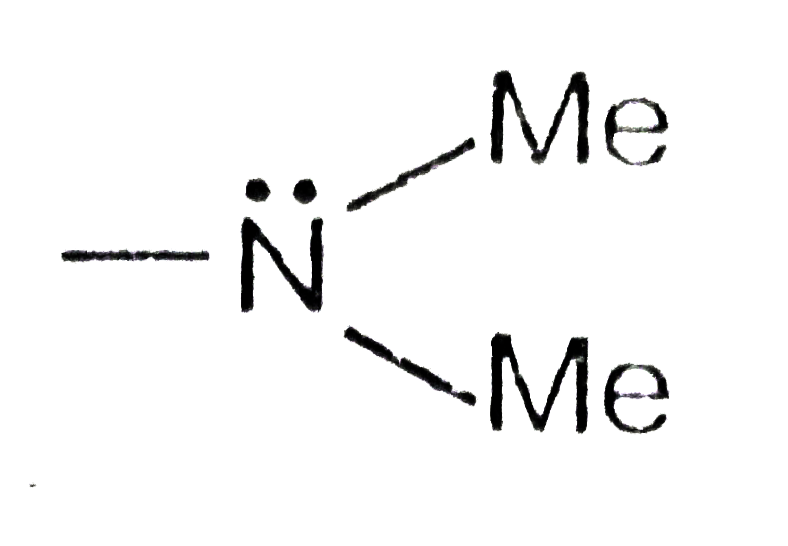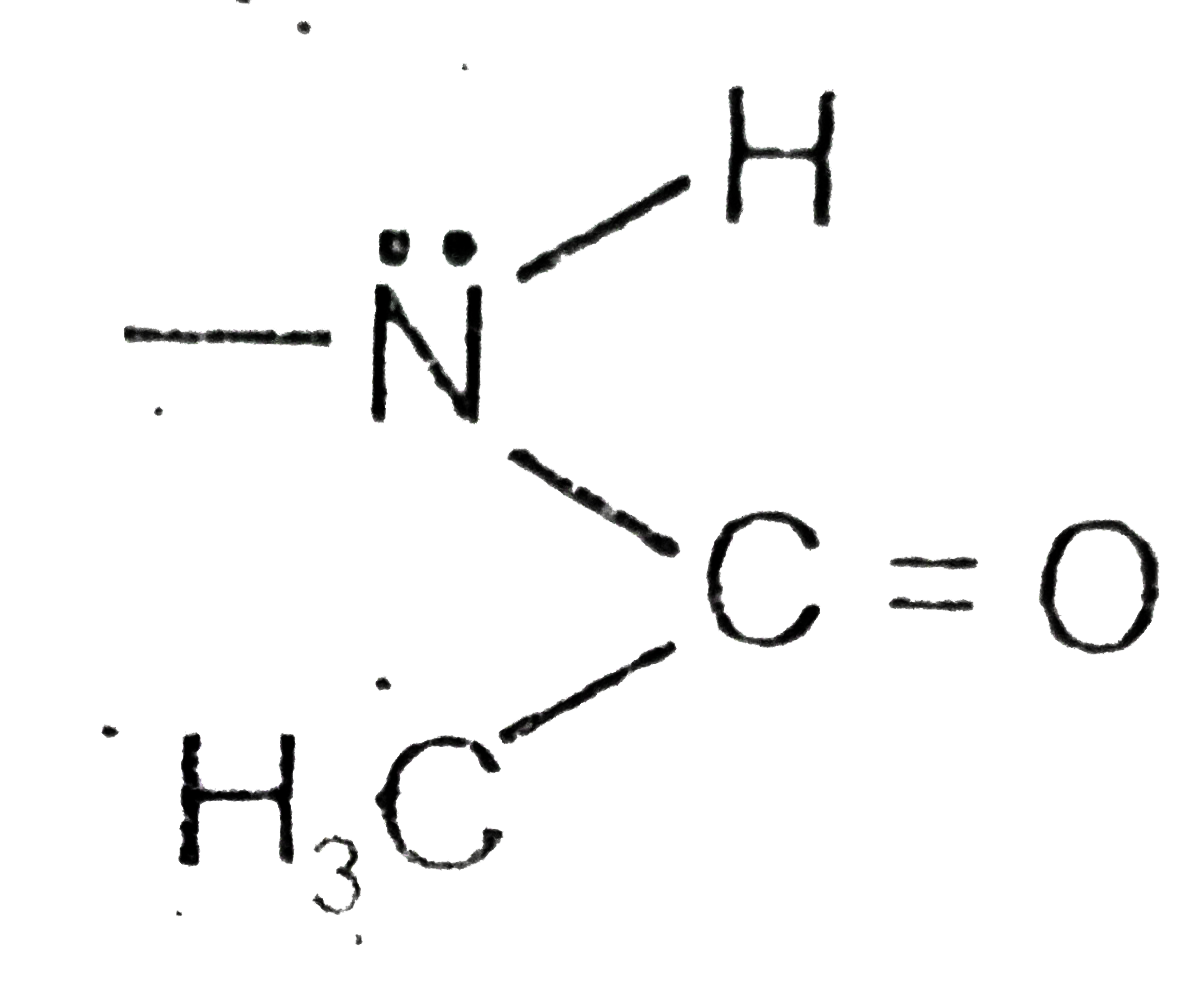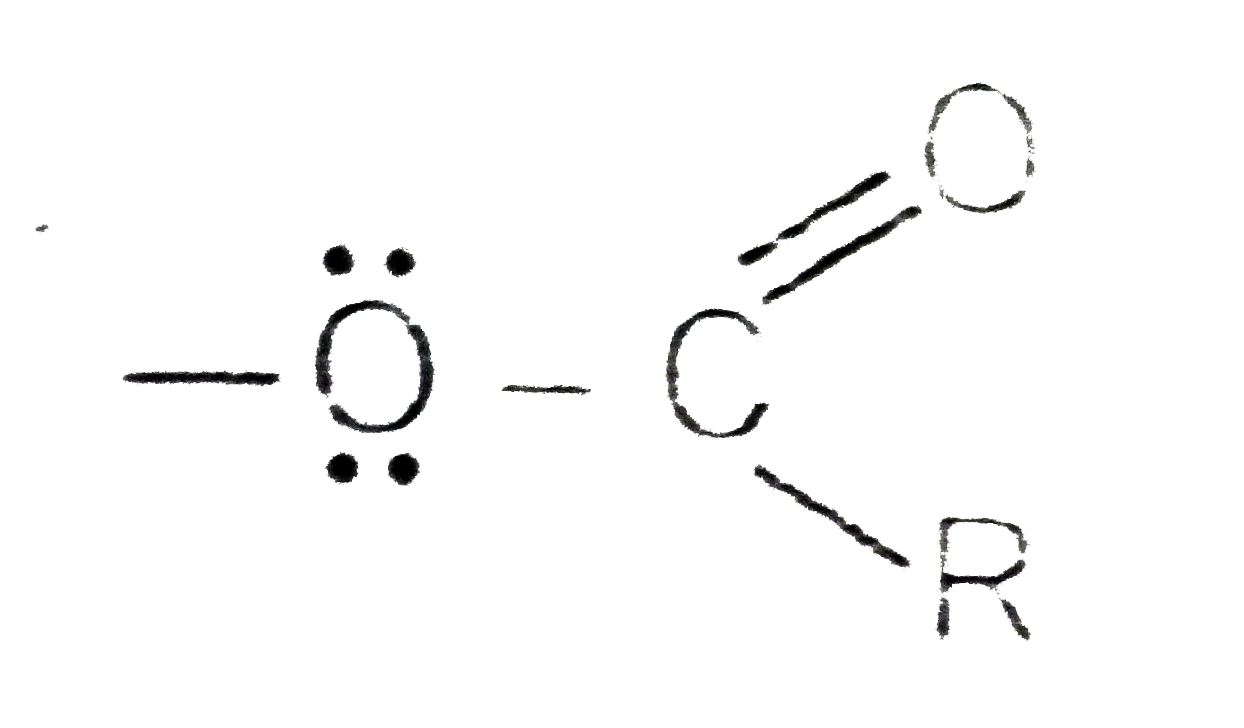Which of the following group will have strongest electron donating mesomeric effect?




The correct Answer is:B
To determine which group has the strongest electron donating mesomeric effect, we will analyze each option provided in the question step by step.
1. Understanding Mesomeric Effect:
- The mesomeric effect (or resonance effect) refers to the delocalization of electrons in a molecule through pi bonds or lone pairs. It occurs when electron density is transferred from a substituent to a conjugated system.
2. Analyzing Each Option:
- Option 1: This group has a positive charge on nitrogen. A positive charge indicates a deficiency of electrons, meaning it cannot donate electrons effectively. Therefore, the mesomeric effect here is weak or negligible.
- Option 2: This group contains two methyl groups. Methyl groups are electron-donating through the +I (inductive) effect. Although they primarily exhibit inductive effects, they can also contribute to the mesomeric effect by increasing electron density on the adjacent atom (like nitrogen). The presence of two methyl groups means that the electron density is increased significantly, making this group a strong electron donor.
- Option 3: This group has a carbonyl (C=O) functional group. The carbonyl group is known to have a -I (inductive) effect, meaning it withdraws electron density from adjacent atoms. Therefore, it does not contribute positively to the mesomeric effect and actually decreases electron density.
- Option 4: This option is not specified in the transcript, but if it were to contain a strong electron-donating group (like -OH or -OCH3), it could potentially have a strong mesomeric effect. However, based on the analysis of the first three options, we can conclude that option 2 is the strongest.
3. Conclusion:
- After analyzing all the options, it is clear that Option 2, which contains two methyl groups, exhibits the strongest electron donating mesomeric effect due to the increase in electron density from both groups.
Final Answer:
Option 2 has the strongest electron donating mesomeric effect.
- The mesomeric effect (or resonance effect) refers to the delocalization of electrons in a molecule through pi bonds or lone pairs. It occurs when electron density is transferred from a substituent to a conjugated system.
- Option 1: This group has a positive charge on nitrogen. A positive charge indicates a deficiency of electrons, meaning it cannot donate electrons effectively. Therefore, the mesomeric effect here is weak or negligible.
- Option 2: This group contains two methyl groups. Methyl groups are electron-donating through the +I (inductive) effect. Although they primarily exhibit inductive effects, they can also contribute to the mesomeric effect by increasing electron density on the adjacent atom (like nitrogen). The presence of two methyl groups means that the electron density is increased significantly, making this group a strong electron donor.
- Option 3: This group has a carbonyl (C=O) functional group. The carbonyl group is known to have a -I (inductive) effect, meaning it withdraws electron density from adjacent atoms. Therefore, it does not contribute positively to the mesomeric effect and actually decreases electron density.
- Option 4: This option is not specified in the transcript, but if it were to contain a strong electron-donating group (like -OH or -OCH3), it could potentially have a strong mesomeric effect. However, based on the analysis of the first three options, we can conclude that option 2 is the strongest.
- After analyzing all the options, it is clear that Option 2, which contains two methyl groups, exhibits the strongest electron donating mesomeric effect due to the increase in electron density from both groups.
Option 2 has the strongest electron donating mesomeric effect.
Topper's Solved these Questions
- ORGANIC CHEMISTRY: SOME BASIC PRINCIPLE AND TECHNIQUESBOOK - AAKASH INSTITUTE ENGLISHCHAPTER - ORGANIC CHEMISTRY: SOME BASIC PRINCIPLE AND TECHNIQUESEXERCISE - SECTION-C OBJECTIVE TYPE QUESTION (MORE THAN ONE OPTIONS ARE CORRECT)
18 Videos
- ORGANIC CHEMISTRY: SOME BASIC PRINCIPLE AND TECHNIQUESBOOK - AAKASH INSTITUTE ENGLISHCHAPTER - ORGANIC CHEMISTRY: SOME BASIC PRINCIPLE AND TECHNIQUESEXERCISE - SECTION-D LINKED COMPREHENSION TYPE QUESTIONS
7 Videos
- ORGANIC CHEMISTRY: SOME BASIC PRINCIPLE AND TECHNIQUESBOOK - AAKASH INSTITUTE ENGLISHCHAPTER - ORGANIC CHEMISTRY: SOME BASIC PRINCIPLE AND TECHNIQUESEXERCISE - ASSIGNMENT SECTION-A COMPETITION LEVEL QUESTIONS
50 Videos
- ORGANIC CHEMISTRY : SOME BASIC PRINCIPLES AND TECHNIQUES BOOK - AAKASH INSTITUTE ENGLISHCHAPTER - ORGANIC CHEMISTRY : SOME BASIC PRINCIPLES AND TECHNIQUES EXERCISE - Assignment(Section-D)(Assertion - Reason Type Questions)
15 Videos
- POLYMERSBOOK - AAKASH INSTITUTE ENGLISHCHAPTER - POLYMERSEXERCISE - ASSIGNMENT (SECTION-D)
13 Videos
Similar Questions
Knowledge Check
Which one of the following is the strongest acid?
A B
B C
C D
D
Which of the following is the strongest −I group :
A−N+(CH3)3B−+NH3C−+S(CH3)2D−F
Which of the following attraction is strongest ?
View SolutionWhich of the following is the strongest nucleophile ?
View SolutionWhich of the following is the strongest base :-
View SolutionWhich of the following is the strongest −I group :
View SolutionWhich of the following is the strongest base?
View SolutionWhich of the following is the strongest base ?
View Solution
